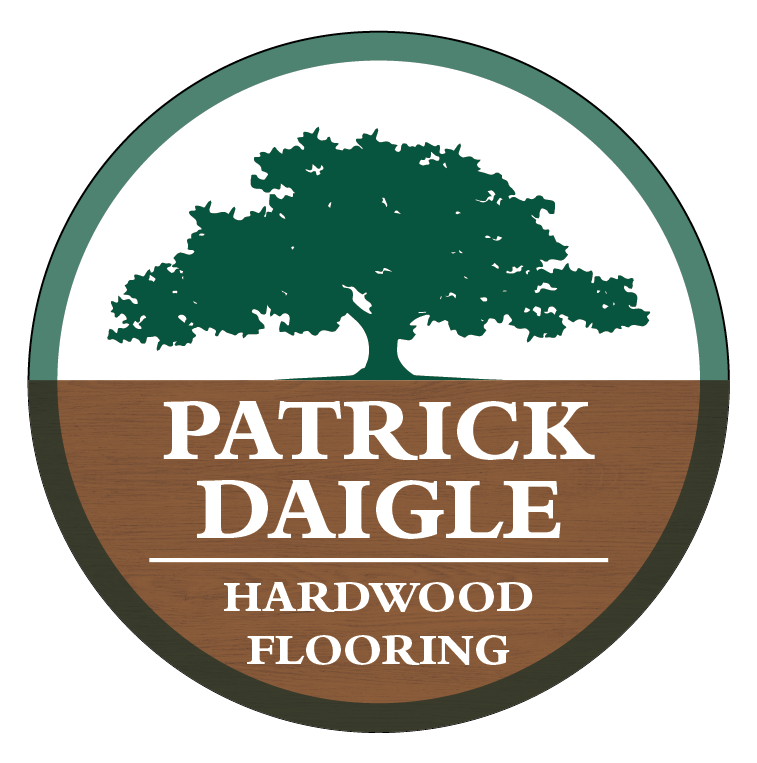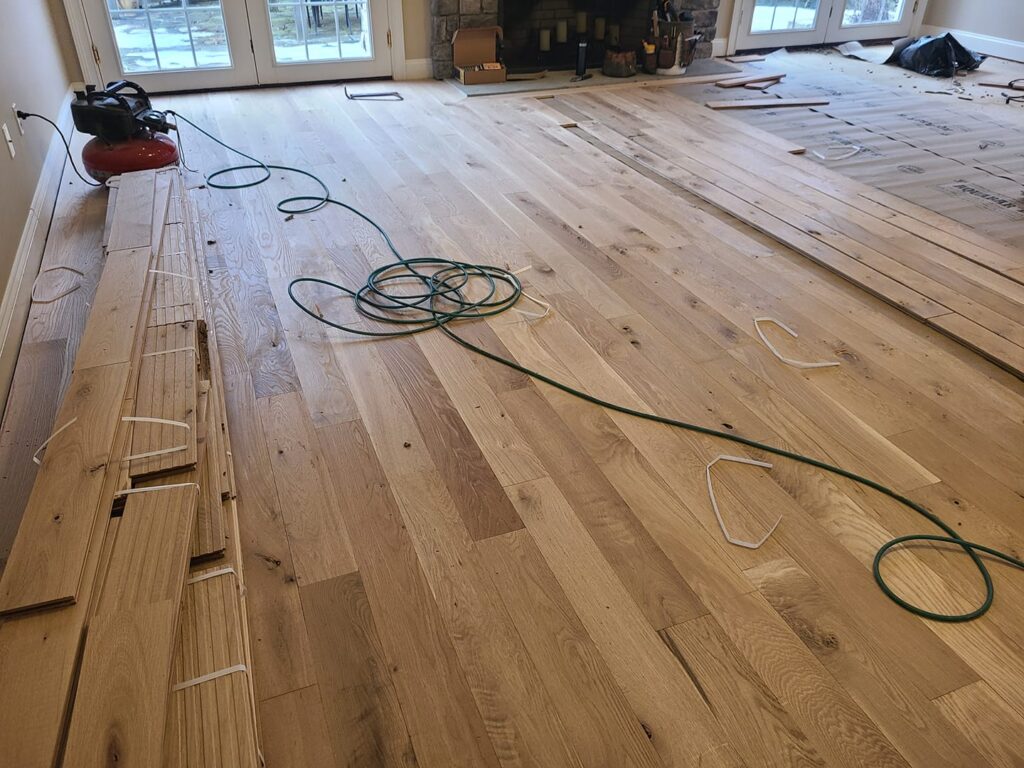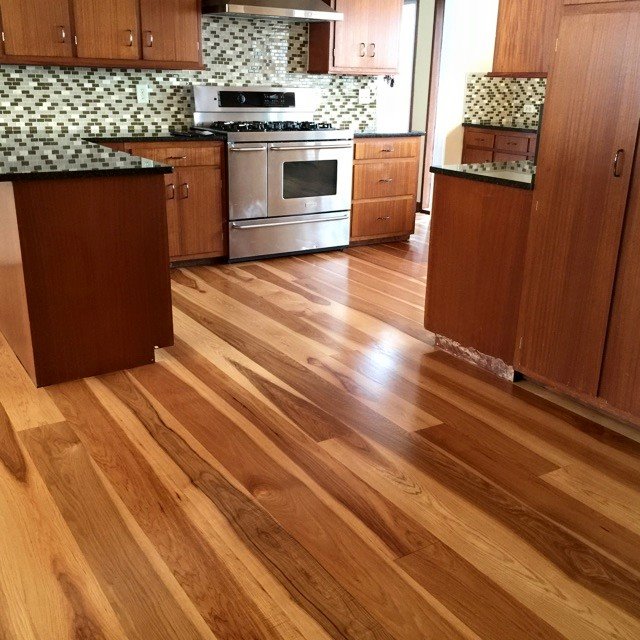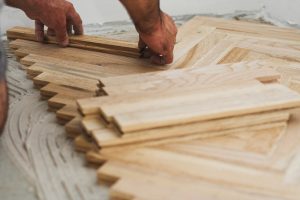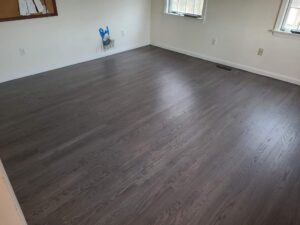What Direction to Lay Hardwood Flooring
Direction Lay Hardwood Flooring
Your wood flooring was delivered last week and your installer is scheduled to come over tomorrow morning to install your hardwood flooring. You took careful consideration into choosing the type of wood and the perfect stain to fit your taste. But, what seemed so simple at the store now seems overwhelming with another decision you must make: in which direction should you lay your solid hardwood flooring? Many homeowners find themselves stuck on this decision because the realization of living with one simple choice for quite a long time can be stressful.
The direction in which you install hardwood flooring boards is dictated by several factors which we will cover in this segment. Factors such as method of installation, structural integrity, and visual aesthetic should all be considered when installing your new hardwood flooring.
Method of Installation
The first factor we must consider is the subfloor and method of installation. If the subfloor is concrete, structural considerations for direction will have little effect on the performance of your flooring. However, if we install with the more standard nail down method, or face nailing, over plywood, the direction of the floor joist must be taken into consideration. The general rule of thumb is to install perpendicular to the floor joist. Exceptions can be made with the use of additional subfloor use to strengthen the existing subfloor. The fastest way to drive a nail into the hardwood flooring is to use a flooring nailer. For tongue and groove flooring, make sure you nail through the tongue directly. As you use a pry bar to pull the boards tightly together, take a tapping block and hold it against the board so your hammer can make contact with the tapping block and still push the boards together without damaging the boards themselves.
Structural Integrity
There are certain concessions you need to make so that you do not compromise the structural integrity of your flooring. When considering how to lay hardwood flooring, you should always mind the expansion gap from the time you begin the installation to the time you complete it. When you lay your flooring, you will need to leave some space for an expansion gap, or room for the boards to grow. Most solid hardwood flooring will expand more than engineered wood floors, and they will expand more in the direction of the tongue. You will also want to consider the type of wood flooring you use because certain solid woods expand more than others. Leaving an expansion gap will also make space for the baseboard and shoe options you may be considering. With this space, you can buy yourself some time to decide what type of baseboard or shoe molding you want to use to support your floors and protect your walls.
Aesthetics
The best way to show off those visually stunning planks may not be so clear cut. Interior designers often agree it is preferable to run your hardwood flooring straight in from the front entry. This gives visitors a sense of length and openness flowing into your home. Hallways should aim to have planks running in the same direction. Directional changes should be avoided so that the flooring has a more continuous flow.
Flooring can be installed in whatever direction you prefer. However, there are some classic options most people tend to choose over others. Many people choose a vertical hardwood floor direction in which the solid wood panels run with the length of the room. If you are wondering what is the cheapest direction for how to lay hardwood flooring, this would be the one because it is the most common. Some clients have to consider the amount of space they are working with when it comes to home improvement. If you have a room that is much smaller and narrower than most, you may want to consider a horizontal hardwood floor direction so that the flooring helps to counteract the tight feeling of the room itself.
When it comes to aesthetics, these are only general guidelines as each home should have its own unique feel. One might even consider an angled installation to better fit the layout. Naturally, there are several other options to choose from, but the more delicate the design, the more expensive the job will be. Make time to clean up the job and smooth over any gaps or holes with a high quality wood putty.
Final Thoughts on How to Lay Hardwood Flooring
As you can see, laying hardwood flooring comes with several key factors to keep in mind. Some homeowners jump quickly into their projects thinking that the only major decisions they have to make include choosing the right type of flooring and picking the correct shade of stain. However, there are so many other aspects to consider. The direction of your hardwood flooring is just as important as these other decisions. Take your time and choose carefully. Consider these factors and options early on so that you can develop a game plan well before it is time for you to begin the work. Everyone will have to make choices, but it is to your benefit if you can anticipate these concerns now and make these decisions before you are halfway done with laying your flooring. Additionally, it’s essential to weigh the benefits of different materials, such as waterproof hardwood flooring benefits, which can significantly enhance durability and ease of maintenance in high-moisture areas. Investing time in research will enable you to select options that align with your lifestyle and preferences. Ultimately, thorough planning will not only save you time during the installation process but also ensure that your investment in hardwood flooring meets your expectations in both functionality and aesthetics.
Not all the hardwork has to fall on your shoulders. Give us a call today at Patrick Daigle Hardwood Flooring to discuss your flooring needs. With our professional help, you can lessen your workload down to just the decision making and we will handle the rest. While laying hardwood flooring can be a manageable project, it can become an expensive endeavor to fix if it is not laid properly in the beginning. With our free in-home estimate, we will be happy to quickly go over your options and walk you through the decision making process with ease and expert advice. Hardwood flooring is an incredible and effective way to update your home, and it will look its best when done professionally.
